Community and Polyvagal Theory
We all need people. Let’s be each others’ people…
Polyvagal Theory (Porges, 2011) interweaves with Maslow’s Theory of Unmet Needs (1943) and Attachment Theory (Bowlby, 2012), impacting what and how we perceive stimuli, our ability to emotionally regulate, to be in authentic relationships, and to mitigate or interrupt the stress response. Polyvagal theory shifts us away from the idea that compulsive behaviours reflect a lack of willpower. Quite the opposite, when unaddressed, the nervous system directs behaviour before our thinking mind can intercede. Behaviours reflect the state of our autonomic nervous system (Flores & Porges, 2017). Relating this process to what is known as Post Traumatic Stress Disorder (PTSD), the nervous systems is reacting to a past threat before our conscious mind can objectively evaluate the situation. Once the brain floods with chemicals, we are often unable to make objective decisions, causing us to react before conscious choice can occur. In this way, when activated, depending on the intensity of the felt threat, conscious choice/willpower is not a part of the equation.
In terms of how we attain homeostasis, according to Polyvagal Theory, we retrain these neuropathways through social interactions that feel safe. When we as a community understand Polyvagal Theory, we have a great opportunity to rewire our neural pathways through relationships of unconditional positive regard. Rewiring neural pathways in a group setting improves our ability exercise secure attachment, as opposed to anxious or avoidant reactions. When we practice this new way of being with others, being witnessed and received with unconditional positive regard, we are more apt to then integrate the shift outside of the circle. Embodying this secure (not avoidant or anxious) way of being with our people empowers us to keep trying to show up, expressing our authentic self with other people and in other contexts.
When we authentically show up in community with others who feel safe, we are working in tandem with neuroception, inhibiting the stress response, and promoting an ability to thrive as our authentic self (Flores & Porges, 2017). Because connection is at the heart of healing and reframing, the work of our time is to shift from our individualist and often disconnected ways, enabling us to collectively heal from trauma. Perhaps from an individualist lens we believe we are safer alone but given the current mental health crises emerging amid individualist cultures, the flaws imbedded in this way of being is clear. Through connection we have a far greater ability to heal from past trauma, surrounded by people who remind us that we are whole and so abundantly and inherently worthy of love.

